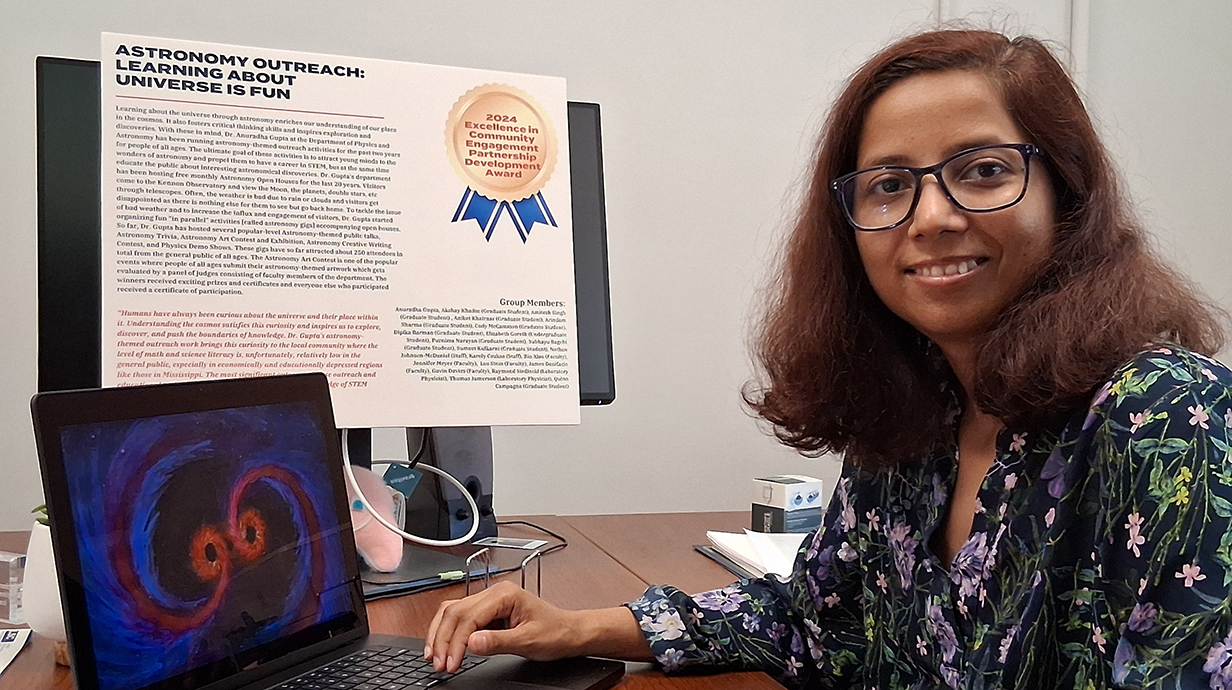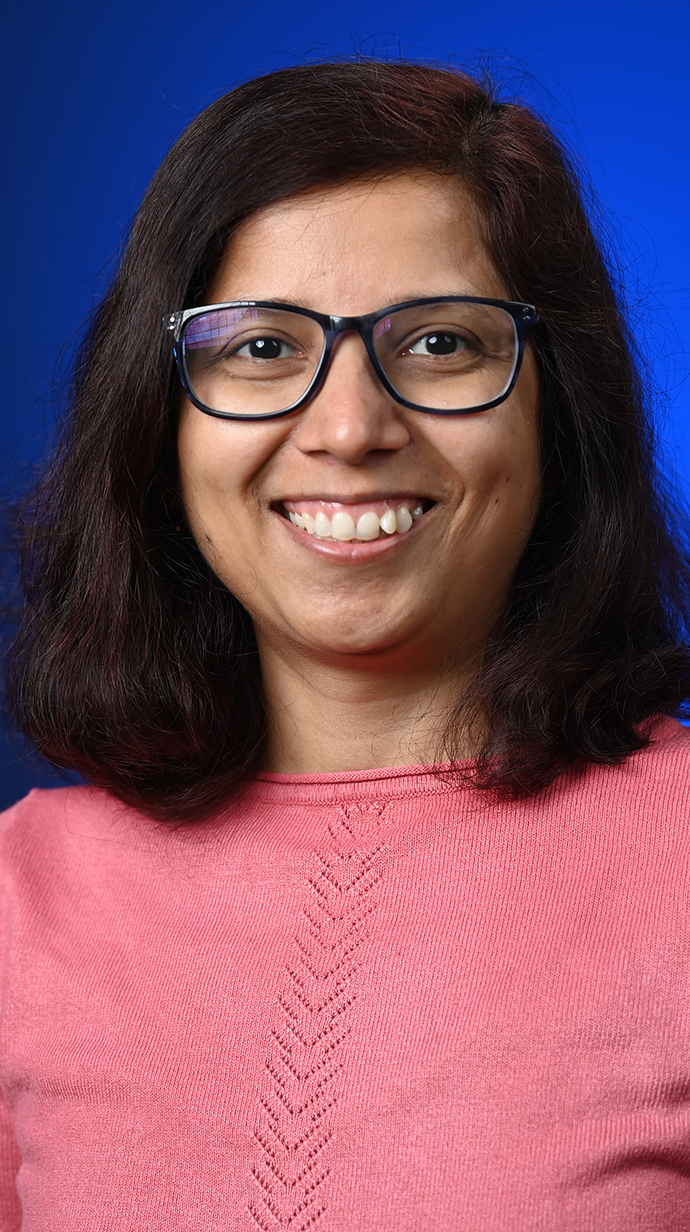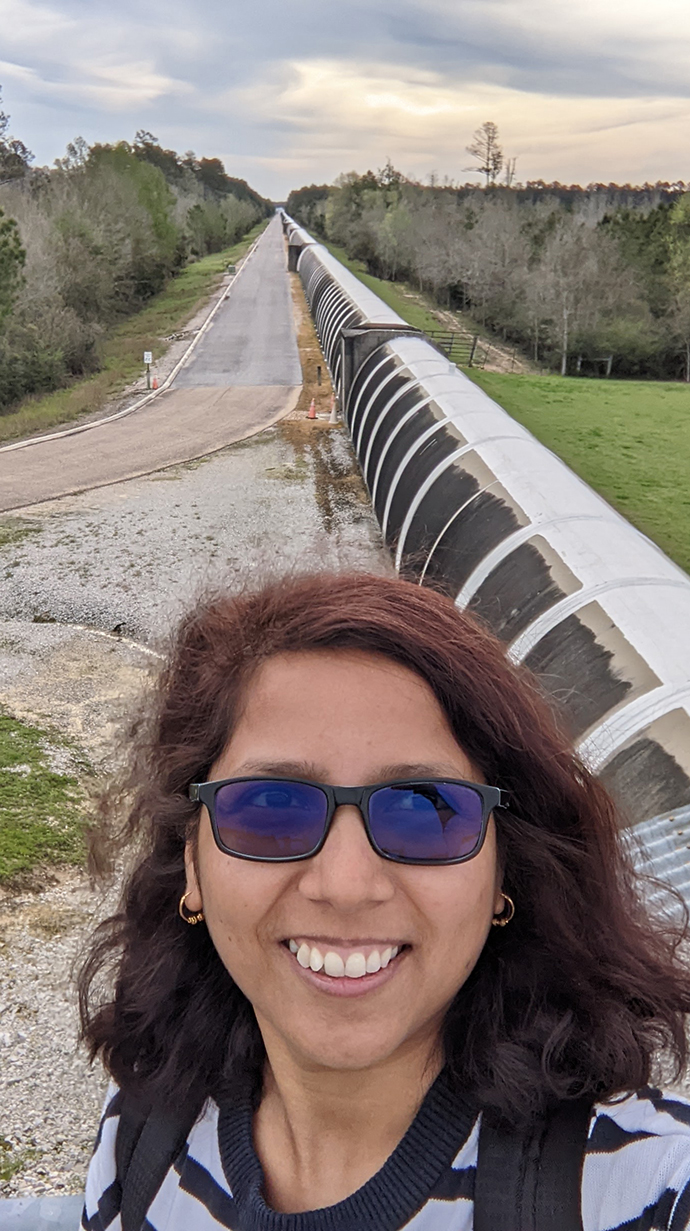New Window to the Universe: Researcher to Study Gravitational Waves
Ole Miss' fourth NSF CAREER award this year to study in ripples in space-time

OXFORD, Miss. – Sifting through the noise of space is no easy task, even for astrophysicists. But a new grant from the National Science Foundation promises to help a University of Mississippi researcher decode the sounds of the universe.
Anuradha Gupta, assistant professor of physics and astronomy, is working to demystify gravitational waves, the so-called ripples in space-time.
"Gravitational waves are another window to the universe," Gupta said. "When Galileo made the first telescope, he opened a new window, and we have slowly built up our ability to sense the universe from there. But we can't 'see' everything, so how do we learn about it?
"You can hear the universe through gravitational waves, and that's why they're important. They give a new window to understand the universe."

Gupta is the university's fourth recipient this year of an NSF Faculty Early Career Development Program award. The program is considered the NSF's most prestigious award to early-career faculty and is designed to identify and support young researchers.
"The NSF CAREER grant is one of the most prestigious awards for young faculty members in science, and it recognizes the first-rate quality of Dr. Gupta's work," said Luca Bombelli, professor of physics and astronomy. "Receiving it will greatly help her career, and because the award was given based on her record and plans in both teaching and research, it is a sign that she holds great promise as both researcher and educator."
Powerful gravitational waves are produced when two black holes or neutron stars collide. They were first predicted by Albert Einstein in his theory of general relativity, and scientists finally proved the existence of these waves in 2015.
Astrophysicists such as Gupta use gravitational waves to test Einstein's theory, understanding that a deviation from general relativity would equate to a new discovery in physics.
"We, as scientists, want a theory to explain everything," she said. "The Einstein theory is a classical theory. So, it cannot explain phenomena happening at the quantum level. This is one of the known limitations of general relativity. So, there must be something we don't understand.
"That's why we want to test our understanding of general relativity, so we can look for a theory that explains everything."
These waves can only be "heard" by massive interferometers like LIGO. Interferometers use lasers to form a cosmic motion detector that listens for faint ripples in space-time using light instead of sound.
But not every detection is a gravitational wave, Gupta said.
"LIGO detectors are trying to measure tiny, tiny disturbances," she said. "But there are so many disturbances that can affect that measurement: seismic noise, airplanes, a very fast car.

Anuradha Gupta visits the Laser Interferometer Gravitational-Wave Observatory in Livingston, Louisiana. The observatory features two 4-kilometer interferometer vacuum tubes to detect tiny disturbances in space-time. Submitted photo
"If we can understand those disturbances better, we can subtract them from the data and what is left is our actual signal."
This is the second award the Ole Miss physicist has earned for her work this year. Earlier this summer, she was selected among 15 recipients worldwide for a prestigious Simons Emmy Noether Fellowship.
Gupta will use her $400,000 CAREER grant to create a verifiable metric by which researchers can determine whether the "sound" picked up by the interferometer is a gravitational wave or another source. Only then can gravitational wave signals that deviate from what's described in Einstein's theory truly be considered new.
"This is going to be a long process," she said. "It took 100 years to detect gravitational waves after Einstein predicted it, and it may take several more decades to prove him wrong."
Along the way, Gupta and her team plan to make the study of gravitational waves more approachable to high schoolers, encouraging the next generation of space enthusiasts.
"Outreach activities for young learners are important in all of the sciences because they contribute to their critical thinking skills and provide them with tools to understand and work in our highly technological society," Bombelli said.
Gupta's team is developing an app that will help students tie basic science to gravitational wave science.
"When you're trying to teach what gravitational waves are and their importance, you don't want to bombard them with the technical details of general relativity," she said. "We want to first make a connection between the things they've already learned and gravitational wave astronomy.
"We want to connect it to the science the students already know."
Gupta plans to make the app available for student use by the end of her project in 2030.
Other recipients of NSF CAREER awards this year include Ole Miss researchers Nikki Reinemann, Jing Li and Wen Wu.
This material is based on work supported by the National Science Foundation grant no. 2440327.
Top: Physicist Anuradha Gupta is the university’s fourth recipient of an NSF CAREER award this year. Gupta is studying gravitational waves, the ripples in space-time that result from black hole collisions. Submitted photo
By
Clara Turnage
Campus
Office, Department or Center
Published
August 26, 2025
